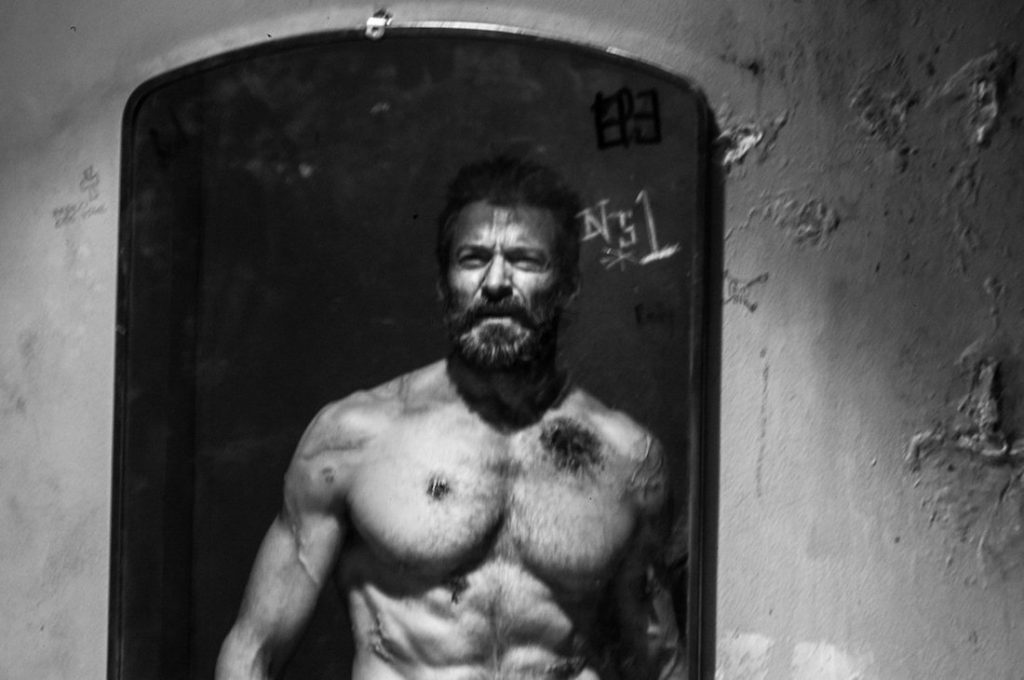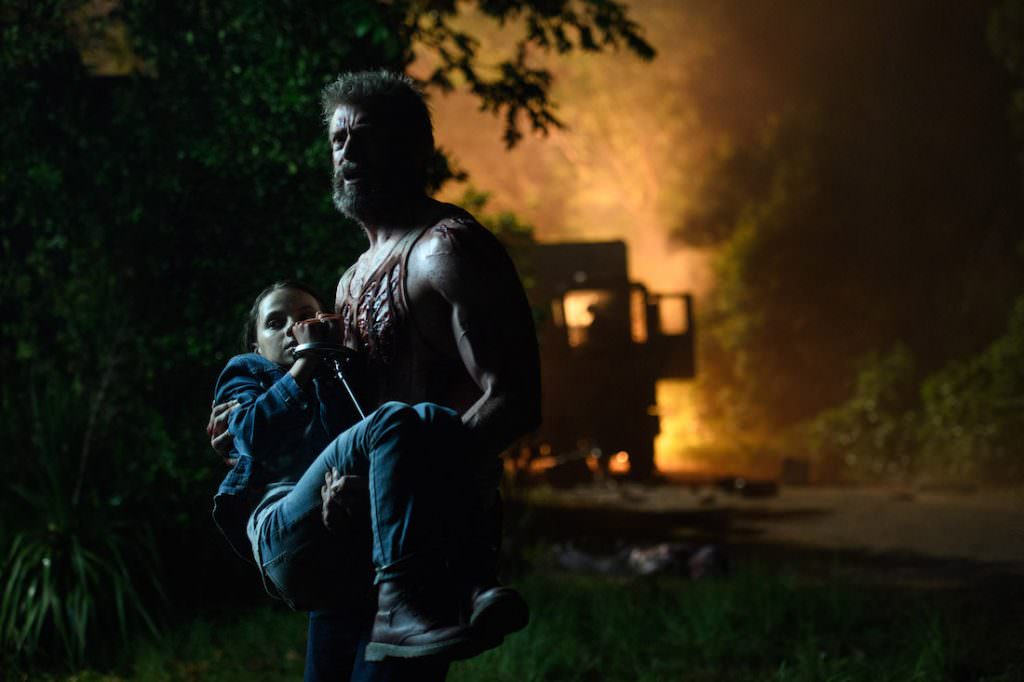If You Ignore 1973-1983, Wolverine’s Timeline Isn’t That Confusing
Spoiler first: At the end of director James Mangold’s 2017 Logan, Logan died. Better known as Wolverine and synonymous with the actor who has played him many times, Hugh Jackman, the character returns on July 26th in Marvel/Disney’s Deadpool & Wolverine. The decision was Jackman’s, and apparently even Marvel boss Kevin Feige was skeptical, but thanks to the multiverse, this Logan supposedly isn’t that Logan, the one who made the ultimate sacrifice to save a young mutant, Laura (Dafne Keen), and went out in a noble, fan-approved fashion.
The X-Men can fly and miraculously heal themselves and bend metal with their minds, so someone dying and coming back to life is hardly the imaginative leap it would be in a more somber film series. Nevertheless, Wolverine’s particular timeline has perplexed Marvel super-fans and novices (raises hand) alike for some time. With all the speculation and Wolverine returning to theaters, why not try to make sense of it? Or at least lay it out in one confusing sequence:
It’s the year 2000. Director Bryan Singer’s X-Men is a critical and box-office success. The movie paves the way for one of the biggest franchises ever. Logan is an adult in the present day. He successfully destroys a mutation-inducing machine created and powered by Magneto (Ian McKellen), a complicated and sympathetic foe.
X2, also directed by Singer, was released in 2003. Logan is searching for clues to the past that have made him into the self-regenerating, adamantium-filled weapon he is. He doesn’t find much, but villain Colonel William Stryker (Brian Cox) seems to know something.
Three years later, sequel X-Men: The Last Stand, directed by Brett Ratner, premieres at Cannes. Logan kills Jean Grey (Famke Janssen), who, on the topic of death and rebirth, had presumably died in the previous film. She is resurrected as a dark alternative personality, the Phoenix. But vis à vis Logan, we are still progressing in time in a linear fashion.
In 2009, Logan gets his star turn. Directed by Gavin Hood, X-Men Origins: Wolverine, gets going in 1845. A boy named James (Troye Sivan) becomes aware of his mutation after watching the man he thinks is his father being killed by another man, Thomas Logan. James uses his newly discovered bone claws to kill Thomas, who tells him he is, in fact, James’s father. James and his half-brother Victor (Liev Schreiber), who is also a self-regenerating mutant with built-in bone weapons, become soldiers fighting in major wars through the 20th century. Victor is an evil half-brother and gets both of them executed by firing squad during the Vietnam War, an experience which, of course, the pair survive. Major William Stryker invites the brothers to join mutant Team X. Six years on, which puts us in the late 1970s/early 1980s territory, Wolverine gets into an-all out war with the amoral Team X after Victor, who’s allegedly gone rogue, also allegedly kills Logan’s girlfriend, Kayla (Lynn Collins). Stryker offers Logan the pivotal operation that sees his skeleton fused with adamantium, and tries and fails to conceal the memory of this from Logan. He winds up inadvertently wiping the memory later on when he shoots Wolverine in the head with adamantium bullets.
X-Men: First Class, directed by Matthew Vaughn, comes out in 2011 and takes place in 1962. All we see of Logan/Wolverine is a brief cameo in a bar, in which he responds to then-partners in mutandom Xavier (Patrick Stewart) and Lehnsherr/Magneto to “go f*** yourself” when they try to recruit him. Given that we know from the previous film that Logan can exist in his adult form, seemingly in perpetuity, this dot on the timeline doesn’t seem too weird.
James Mangold’s The Wolverine, which premiered in 2013, takes place a few years after X-Men: The Last Stand, from 2006. We revisit August 1945 and watch Wolverine, a Japanese POW, save a Japanese officer, Ichirō Yashida (Ken Yamamura), from the atomic bomb dropped on Nagasaki, then cut to the present. A dying Ichirō (Hal Yamanouchi) has mutant Yukio (Rila Fukushima) bring Logan to Japan, only to fake his own death and, as the Silver Samurai, sever Wolverine’s adamantium claws and rob him of his ability to self-heal. (Wolverine regenerates his original bone claws and uses those to kill Ichirō.) In a bonus credits scene set two years later, Xavier and Lehnsherr once again approach Logan about mutant-related issues. This time, he does not tell them to “go f*** yourself.”
It’s 2014. Bryan Singer is back to direct X-Men: Days of Future Past, which takes place in 2023. Robots called Sentinels are killing mutants and any recessive-mutant-gene possessing humans. The solution is to time travel to 1973 to prevent the assassination of the Sentinels’ creator, Bolivar Trask (Peter Dinklage). Logan volunteers to go in Xavier’s stead, and his present-day brain inhabits his 1970s body, which does not seem to be fighting in the Vietnam War in this movie, even though it was doing that around this time in X-Men Origins: Wolverine. Nothing goes to plan, and the Sentinels wind up activated in the past (it’s Richard Nixon’s fault), as well as killing mutants back in 2023. But the X-Men prevail, and Logan returns to a peaceful, Sentinel-free 2023. Back in 1973, however, after almost drowning, he gets picked up by Stryker, who is actually Raven, the mutant who originally assassinated Trask. Speaking of timelines, Jean Grey seems to be doing well, which is nice, given what happened in 2006’s The Last Stand.
2016’s X-Men: Apocalypse opens in 3600 B.C., then fast-forwards to 1983. We only see Wolverine during a Hugh Jackman cameo, trapped in Stryker’s Weapon X experimentation facility. This seems to be the movie where everyone gets most confused about Wolverine’s general dance card. Also, who put Logan in that facility — Stryker? Raven (Jennifer Lawrence) disguised as Stryker? It is simpler to write off clarity on Wolverine’s whereabouts in the 1970s through the early 1980s and instead accept that this was a pivotal period for a gruff Canadian logger who was a child in 1845. It’s a lot for an almost 150-year-old guy, even one who can self-regenerate.
Which brings us to 2017’s Logan and his death. It’s 2029, Wolverine’s healing abilities are failing him, Xavier has dementia, and Logan technically has a sudden adopted daughter, Laura, created from his DNA by a biotechnology company called Transigen, which now wants to kill off all the mutant children it produced. The company’s most effective means of enforcement is X-24, a Wolverine clone. Fighting to save Laura and the other children, Logan is killed by his clone and dies in his daughter’s arms. She then kills X-24 with an adamantium bullet. In terms of the timeline, no notes.


This summer’s Deadpool & Wolverine, directed by Shawn Levy, doesn’t necessarily fall outside Wolverine’s timeline. The movie is a sequel to 2018’s Deadpool 2, so if it takes place six years on, he hasn’t yet reached the dystopia of 2029. But that may not matter, anyway. Wade Wilson (Ryan Reynolds) is being brought out of retirement for a mission by the Time Variance Authority, so there will be multiverse hopping either way. On top of that, Marvel head Kevin Feige has indicated that this movie’s Logan is a Variant we haven’t seen before. Here’s hoping that will be further explained, but what seems most salient is Jackman’s enthusiasm to bring the character back for this specific arm of the franchise — Variant or original, Wolverine’s return, alongside Deadpool for the first time, should be worth some suspension of disbelief.
For more on Deadpool & Wolverine, check out these stories:
How Hugh Jackman Saved “Deadpool 3”
“Deadpool & Wolverine” Director Shawn Levy Eyed for Next “Avengers” Film
Featured image: Hugh Jackman as Wolverine/Logan in 20th Century Studios/Marvel Studios’ DEADPOOL & WOLVERINE. Photo by Jay Maidment. © 2024 20th Century Studios / © and ™ 2024 MARVEL.



